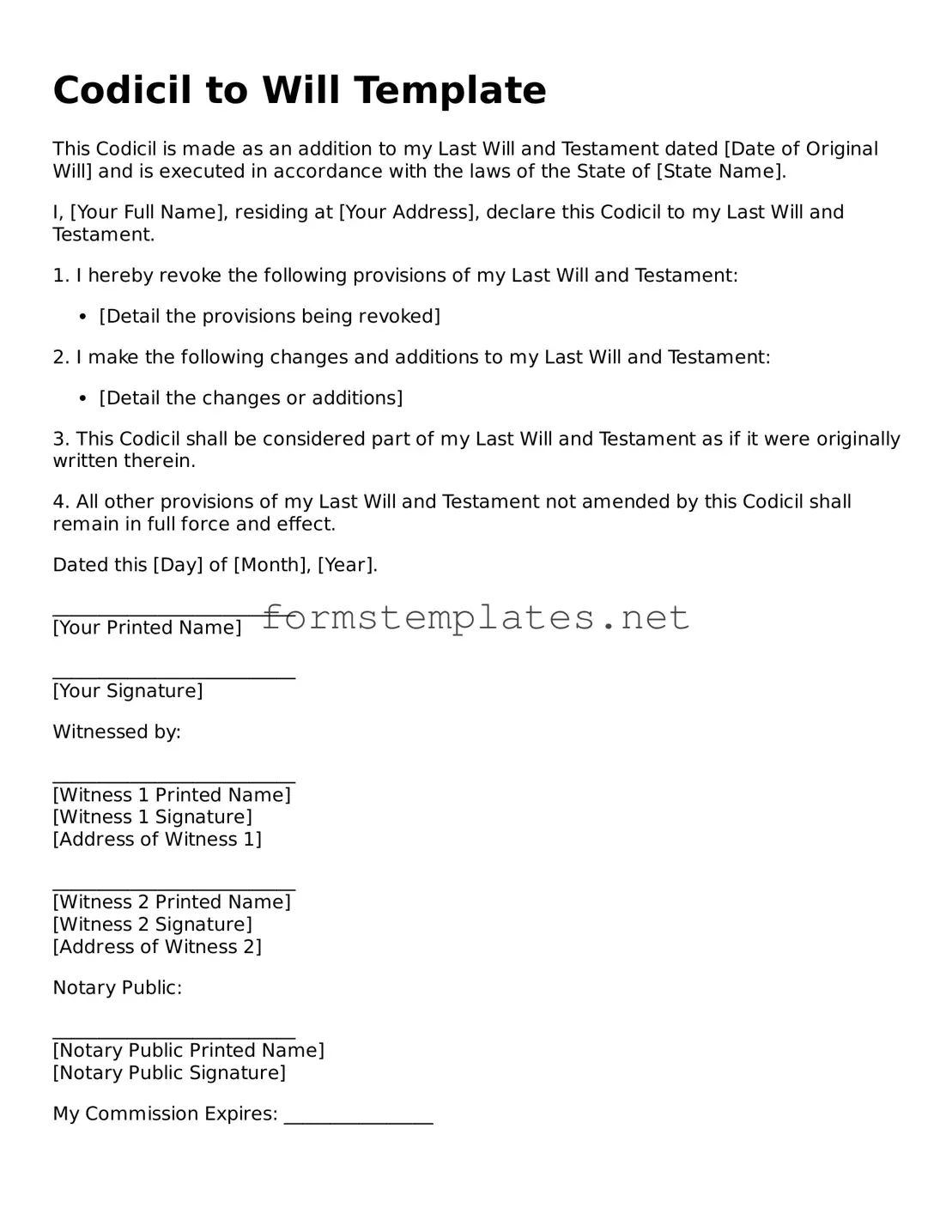Codicil to Will Template
This Codicil is made as an addition to my Last Will and Testament dated [Date of Original Will] and is executed in accordance with the laws of the State of [State Name].
I, [Your Full Name], residing at [Your Address], declare this Codicil to my Last Will and Testament.
1. I hereby revoke the following provisions of my Last Will and Testament:
- [Detail the provisions being revoked]
2. I make the following changes and additions to my Last Will and Testament:
- [Detail the changes or additions]
3. This Codicil shall be considered part of my Last Will and Testament as if it were originally written therein.
4. All other provisions of my Last Will and Testament not amended by this Codicil shall remain in full force and effect.
Dated this [Day] of [Month], [Year].
__________________________
[Your Printed Name]
__________________________
[Your Signature]
Witnessed by:
__________________________
[Witness 1 Printed Name]
[Witness 1 Signature]
[Address of Witness 1]
__________________________
[Witness 2 Printed Name]
[Witness 2 Signature]
[Address of Witness 2]
Notary Public:
__________________________
[Notary Public Printed Name]
[Notary Public Signature]
My Commission Expires: ________________
